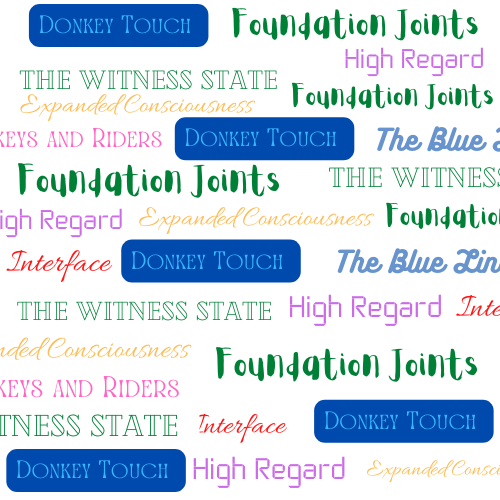
You’ve likely heard these words many times: touching structure and energy simultaneously and consciously. This is the definition of Donkey Touch. It is fundamental in Zero Balancing and differentiates Zero Balancing touch from that used in other types of bodywork. It is one of the most powerful principles in ZB. Can you think of any part of a human being that isn’t either energy or structure? I can’t. So using Donkey Touch automatically connects you with every aspect of your client.
It’s easy to confuse Donkey Touch and Interface. So let’s clarify right here at the beginning of our discussion. Interface is boundary. Knowing where you stop and your client starts. It’s the fence that differentiates your property from your neighbor’s. It’s easy to see why Interface is important when using Donkey Touch. If you are touching every aspect of your client, it’s of paramount importance to know what is yours and what is theirs.
As we learn Zero Balancing, there are lots of things that demand our attention. Learning the protocol, where to place our bodies and hands, taking out looseness, building and holding fields, clean, clear disconnect. When we progress to the advanced classes there is even more wonderful territory to explore and master. While Donkey Touch is not forgotten, our focus may be on our horizon, filled with the new and exciting things we are learning. This is natural. And returning your focus to the simplicity of Donkey Touch will amplify the effectiveness of every fulcrum, whether Core ZB or advanced.
An experience that taught me the power of Donkey Touch occurred early in my Zero Balancing training, although I didn’t realize it at the time. It wasn’t until years after becoming a teacher that I recognized the value of the experience I’d had. I was working as a Physical Therapist in a nursing home and was asked to help with a severely mentally and physically disabled young woman who needed casts made in order to fabricate new braces for her ankles and feet. The orthotist making the braces was unable to apply the casting material because she was kicking her feet up and down nonstop. I was asked to help keep her still. This was an impossible task. She did not understand language so words were ineffective. I was unwilling to physically restrain her as it was disrespectful and not the way I would treat anyone. I didn’t know what to do. The only thing I could come up with was to try Donkey Touch. I’d only had ZB I at the time so had very little confidence I’d be able to use it effectively. But since I had no other ideas, I gave it a shot. I stood behind her wheelchair and placed my hands on both upper trapezius muscles. To the best of my newbie ability, I touched her energy and structure. She stopped kicking and started weaving her upper body from side to side. Her caregiver said, “What are you doing? That’s what she does when she’s happy.” I followed her as she moved and, as best I could, stayed connected with her energy and structure. It was enough. Her feet remained still and the orthotist was able to complete the casts for her braces. Mission accomplished.
If the use of Donkey Touch by a new student of ZB can quiet an agitated young woman, imagine what it can do combined with the fulcrums in the protocol and all the other ZB principles? This is the power of Donkey Touch.
